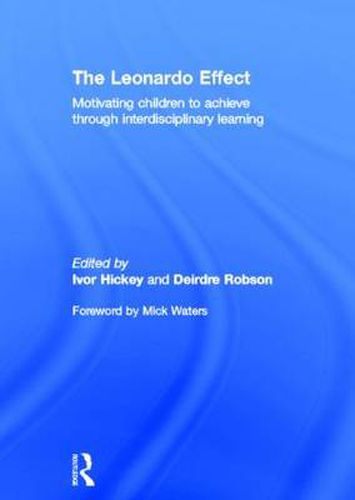Readings Newsletter
Become a Readings Member to make your shopping experience even easier.
Sign in or sign up for free!
You’re not far away from qualifying for FREE standard shipping within Australia
You’ve qualified for FREE standard shipping within Australia
The cart is loading…






The Leonardo Effect: Motivating Children To Achieve Through Interdisciplinary Learning is based on the experiences of academics, primary teachers and head teachers who participated in NESTA funded research in schools, entitled The Leonardo Effect®. Central to The Leonardo Effect was the integration of science with art in children’s learning through awareness of subject commonalities such as: topics of exploration, development of ideas and creative thinking. The integration of the two domains of learning was so complete that children saw themselves enjoying learning and achieving rather than simply becoming competent in a particular subject. Teachers, parents and head teachers reported that not only was children’s knowledge enhanced but also their creativity and skills. In addition, the approach proved successful in engaging reluctant learners, challenging the more able and showing marked advances in children’s literacy. Most importantly, the children really enjoyed it. Literacy is embedded in the most natural and relevant way, which is effective in raising standards. Key elements include: connected learning; listening to the ideas of the children; research based work and being creative. It is a teaching approach that makes teaching rewarding and interesting for the teacher again after years of restrictive planning and uncreative teaching. It is taking hold in schools and Education Authorities with support from parents. The book is divided into two sections. Section 1 consists of a series of chapters written by education lecturers who describe innovative approaches to the curriculum which make the integration of art and science possible, and the outcomes achievable under The Leonardo Effect. Section 2 consists of series of illustrated case studies written by experienced teachers and head teachers relating to specific aspects of the delivery of The Leonardo Effect in their classrooms and schools and the results achieved. They enable readers to envisage delivering The Leonardo Effect themselves and achieving the outcomes common to it. Children learned more in a week than they normally would in a term Head Teacher He ‘went up’ two reading levels in a fortnight Teacher Wow. It was a whole different world. Pupil
$9.00 standard shipping within Australia
FREE standard shipping within Australia for orders over $100.00
Express & International shipping calculated at checkout
The Leonardo Effect: Motivating Children To Achieve Through Interdisciplinary Learning is based on the experiences of academics, primary teachers and head teachers who participated in NESTA funded research in schools, entitled The Leonardo Effect®. Central to The Leonardo Effect was the integration of science with art in children’s learning through awareness of subject commonalities such as: topics of exploration, development of ideas and creative thinking. The integration of the two domains of learning was so complete that children saw themselves enjoying learning and achieving rather than simply becoming competent in a particular subject. Teachers, parents and head teachers reported that not only was children’s knowledge enhanced but also their creativity and skills. In addition, the approach proved successful in engaging reluctant learners, challenging the more able and showing marked advances in children’s literacy. Most importantly, the children really enjoyed it. Literacy is embedded in the most natural and relevant way, which is effective in raising standards. Key elements include: connected learning; listening to the ideas of the children; research based work and being creative. It is a teaching approach that makes teaching rewarding and interesting for the teacher again after years of restrictive planning and uncreative teaching. It is taking hold in schools and Education Authorities with support from parents. The book is divided into two sections. Section 1 consists of a series of chapters written by education lecturers who describe innovative approaches to the curriculum which make the integration of art and science possible, and the outcomes achievable under The Leonardo Effect. Section 2 consists of series of illustrated case studies written by experienced teachers and head teachers relating to specific aspects of the delivery of The Leonardo Effect in their classrooms and schools and the results achieved. They enable readers to envisage delivering The Leonardo Effect themselves and achieving the outcomes common to it. Children learned more in a week than they normally would in a term Head Teacher He ‘went up’ two reading levels in a fortnight Teacher Wow. It was a whole different world. Pupil